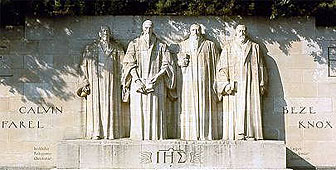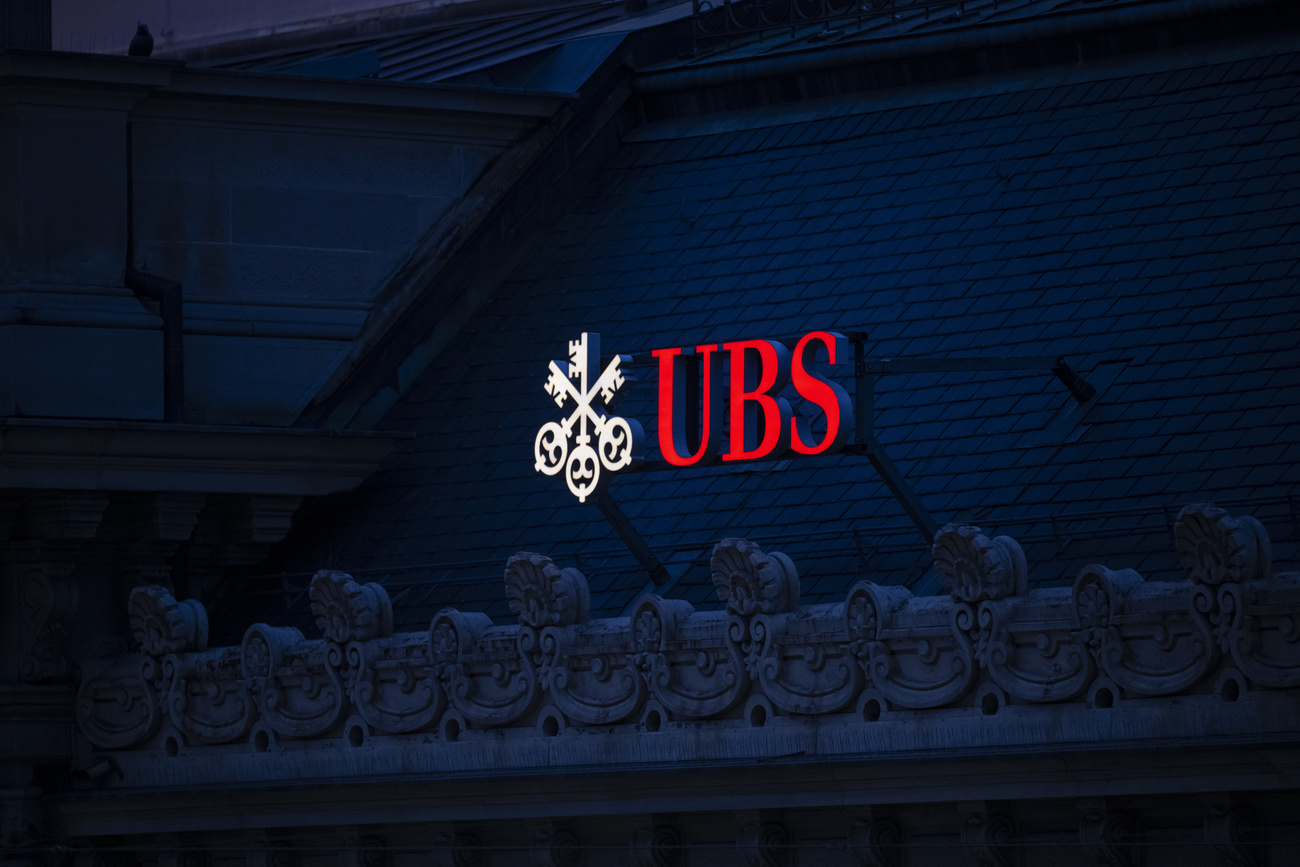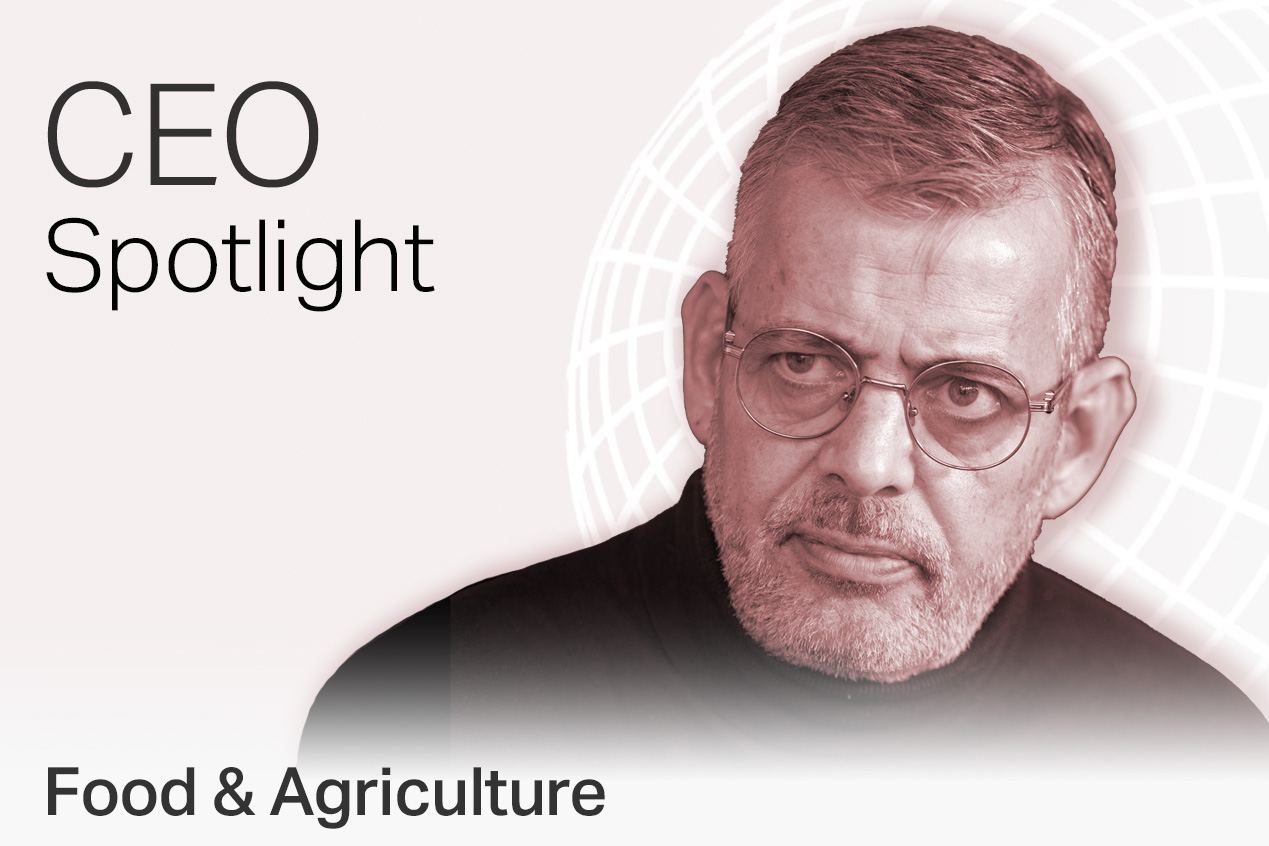Spirit of Calvin is still alive in Geneva

Some say that Geneva's reputation as a humanitarian capital has its roots in the time when it was the centre of the Protestant world. Roy Probert looks at the city's reformation heritage and asks; is the spirit of Calvin alive in Geneva?
Over the centuries, Geneva has welcomed many dissidents. But few can have been as influential as Jean Calvin. The number of people practising Calvin’s austere brand of Protestantism in Geneva may have dwindled, but there are constant reminders of his legacy, nowhere more so than in the Parc des Bastions.
It’s home to one of the city’s most famous and intimidating monuments, the Wall of the Reformation, built between 1909 and 1917 to commemorate the 500th anniversary of Calvin’s birth. Out of this 90 metre-long wall, are carved some of the leading lights of the Reformation.
Four figures form the centrepiece, five metres high, looking down disapprovingly at the scantily-clad students lazing on the lawns and playing football in front of the University building opposite.
These four are Calvin himself, Guillaume Farel, the man responsible for establishing the reformation in Geneva and persuading Calvin to remain in the city; Theodore Bèze, the first rector of the Geneva Academy; and John Knox, who came to Geneva as a refugee and went on to found the Presbyterian church in Scotland.
Alongside them are smaller panels and figures depicting the likes of Oliver Cromwell, William the Silent and the Pilgrim Fathers. Earlier important figures of the reformation, Martin Luther and Ulrich Zwingli, are relegated to separate slabs of stone at either end of the monument, almost as an afterthought. Clearly the city fathers felt that the Reformation proper started in Geneva.
“The monument was very much conceived in the spirit of the times in which it was built,” says Irena Backus of Geneva’s Reformation Institute. “There was a competition and some of the models that were submitted were quite appalling. This was probably the best of the lot.”
“But what it does show is the international nature of the Geneva Reformation. Calvinism’s success was due to the fact that it wasn’t linked to any particular country,” Backus says.
The statues of Calvin and his cohorts are a tangible sign of the city’s Protestant heritage. But ironically, while the Catholic population in the city has increased with the arrival of immigrants from Spain, Portugal and Italy, Protestant churches often struggle to attract even a handful of believers. So is Calvinism dead in the city of its birth?
“One link with Calvin is the international character of the city – it’s openness to all sorts of cultures. It’s a very easy city in which to become assimilated,” Backus says.
There was one Reformation artefact that I particularly wanted to see, and Backus took me across to the University and the Reformation Institute where it’s located.
The Geneva Bible is one of the most important milestones in the history of the Protestant Church. And, considering it is 450 years old, it is in remarkably fine condition. Until the authorised version, this was the most successful English-language bible in the world. It was Shakespeare’s bible and the bible that the Pilgrim Fathers took to America.
In fact there are several Geneva Bibles, all written by exiled 16th Century English Protestants. They went back to the original scriptures in Greek and Hebrew and noticed huge discrepancies with the Latin bible used by the Catholic Church.
“It’s heavily annotated, and the annotations in the margin are very doctrinal, so the reader had not only the text, but also instructions on how to read it,” Backus explains. The Geneva Bible is often known as the Breeches Bible, because that is what Adam and Eve decide to wear when they realise they ought to cover up.
“It has considerable historical value. It’s important not only in terms of the evolution of the church, but also of the English language,” Backus says.
In Calvin’s time, Geneva was a cramped little city, and the Old Town is packed with atmospheric streets and buildings which shed light on its history. To get there you must walk up the Rampe de la Treille, which were the old city ramparts and now, incidentally, contain the world’s longest wooden bench – at 120 metres.
These old city walls played a central role in Geneva’s most famous celebration – the Escalade on December 11th. The festival marks the night in 1602 when the city was saved from the Catholic forces of the Duke of Savoie by a housewife – La Mère Royaume – who, according to local legend, noticed the enemy scaling the city walls, tipped a cauldron of hot vegetable soup on their heads and raised the alarm.
Today, the cauldron is made of chocolate and the vegetables from marzipan, and the Genevans indulge in one of Switzerland’s favourite pastimes – dressing up in historical costumes and playing fifes and drums.
The atmospheric Bourg-de-Four square is the place to be seen in the Old Town. A stone’s throw from here are some of Geneva’s most important landmarks, including the little Gothic church, where Calvin and Knox preached.
No student of the reformation could visit Geneva without visiting St Pierre’s Cathedral. Outside, it is an incongruous mix of 12th century Romanesque and Gothic architecture and a Neo-classical facade which was added in the 18th century. But inside, it’s all austere simplicity.
The followers of Calvin stripped the Cathedral of most of its catholic adornments, many of which are now in the city’s Art and History museum. The decorations that remain – a cross made by the jeweller Gilbert Albert, the old wooden misericords – seem all the more striking for being so few.
“It has had much of its flamboyance stripped away. But this has been replaced by something much more in tune with the modern world,” says William McComish, the dean of St Pierre’s. “You have an empty building which you fill with colour and warmth through the worship of the people. Preaching here is an awe-inspiring and humbling sensation.”
If you want to see what the cathedral might have looked like before the Reformists got their hands on it, you can visit the beautifully preserved Maccabean chapel. The rest of the cathedral resonates with history – and especially Genevan history.
“Calvin’s teachings affect modern Geneva very much. If you look at this cathedral, you discover a great deal of modern thought,» McComish says. He explains that Jean-Jacques Rousseau, who wrote the Rights of Man, was baptised here. Henri Dunant, who founded the Red Cross, worshipped here, as did Woodrow Wilson, the US President who set up the League of Nations.
“In Calvinism, you have the seeds of a structure for society that is horizontal rather than parametal, where you don’t have a pope or a patriarch telling you what to think. This is terribly Genevan, and terribly modern,” he says. “Today Geneva is a humanitarian capital, and this seems to me to be in a straight line from Calvin’s Geneva.”
Calvin has become something of a caricature over the centuries – a stern authoritarian dictator with no sense of fun. It’s a view that seems to be reinforced by monuments like the Wall of the Reformation. But he was a revolutionary figure whose ideas are still current today.
Some of the Reformation monuments are an embarrassment for people like McComish. “For a post-modernist historian like myself, the Wall of the Reformation is not my vision of history,” he explains. “It’s a row of DWEMs – dead white European males. There’s not a woman, not a black, not a smile. We Protestants must be wary of worshipping our own past.”
“If I wanted you to see the organisations which today best represent Calvinism in Geneva, I would not take you to the Reformation Wall. I would take you to the Red Cross, because that’s where it’s being put into practice. And put into practice because of Christian beliefs.”
by Roy Probert

In compliance with the JTI standards
More: SWI swissinfo.ch certified by the Journalism Trust Initiative








You can find an overview of ongoing debates with our journalists here . Please join us!
If you want to start a conversation about a topic raised in this article or want to report factual errors, email us at english@swissinfo.ch.